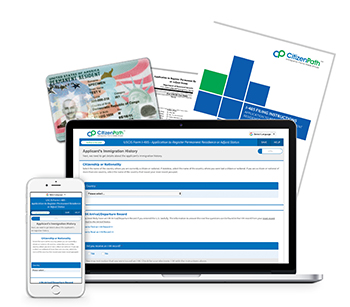Eligibility and Benefits of Refugee Status
Refugee Status Overview
What does is mean to be a refugee?
The United States welcomes thousands of refugees each year. A refugee is a person that is outside the United States and is seeking protection because they have suffered persecution or fear that they will suffer persecution due to race, religion, nationality, membership in a particular social group or political opinion. Examples of situations that may qualify as persecution include: imprisoned and tortured political dissidents or supposed undesirables; fired on protesters; committed genocide against a certain race; or made sure that members of a certain religion were left out of the political process. These situations will generally qualify for refugee status.
If you are eligible for refugee status, you may be permitted to enter the United States, eventually apply for a green card, and even have a path to citizenship.
Difference between Asylum and Refugee Status
Eligibility for Refugee Status
Who is eligible for refugee status?
To determine if you are eligible for refugee status, USCIS will evaluate whether you meet the definition of a refugee according to section 101(a)(42) of the Immigration and Nationality Act (INA). In general, eligibility for refugee status requires that:
- You are located outside the United States;
- The reason for persecution is related to one of five things: race, religion, nationality, membership in a particular social group, or political opinion;
- You have not already resettled in another country; and
- You are not inadmissible to the United States.
You must receive a referral to the U.S. Refugee Admissions Program (USRAP) for consideration as a refugee. If you receive a referral, you will receive help filling out your application and then be interviewed abroad by a USCIS officer who will determine whether you are eligible for refugee resettlement. If you are a refugee in the United States and want your family members who are abroad to join you, you may file Form I-730, Refugee/Asylee Relative Petition, for your spouse and unmarried children under 21. You must file within two years of your arrival to the United States unless there are humanitarian reasons to excuse this deadline.
Working as a Refugee
Do refugees have permission to work?
As a refugee, you may work immediately upon arrival to the United States. When you are admitted to the United States you will receive a Form I-94 (Arrival/Departure Record) stamped to indicate “Employment Authorized.” Additionally, a Form I-765, Application for Employment Authorization, will be filed for you in order for you to receive an Employment Authorization Document (work permit). While you are waiting for your work permit, you can present your Form I-94, Arrival-Departure Record, to your employer as proof of your permission to work in the United States.
Traveling Abroad as a Refugee
Can refugees travel outside of the United States?
If you wish to travel outside the United States for a brief period of time but return to your refugee status, you must apply for a Refugee Travel Document before traveling. To apply for a travel document, you would file a Form I-131, Application for Travel Document.
Generally, you should not travel back to the country of past persecution. This puts you at high risk of having your refugee status revoked. CitizenPath recommends that you contact at immigration attorney before traveling abroad with refugee status. Advance parole allows certain individuals to return to the U.S. without a visa; however, advance parole does not guarantee that you will be allowed to reenter the United States. To obtain advance parole, you must also file Form I-131, Application for Travel Document.
Obtaining a Green Card through Refugee Status
Is it possible for refugee to get a green card?
If you were granted refugee status, you are eligible to apply for a green card (permanent residence) one year after receiving that status. Your spouse and children will also need to apply for a green card if they were admitted to the United States as refugees. If you are a refugee, you may apply for a green card if you have:
- Been physically present in the United States for at least one year after being admitted as a refugee;
- Not had your refugee admission terminated; and
- Not already acquired permanent resident (green card) status.
You are not required to apply for a green card; however, it may be in your best interest to do so. If conditions change in your home country or you no longer meet the definition of a refugee due to changed circumstances, you may no longer qualify for refugee status with the right to remain permanently in the United States. What’s more, permanent residents have a path to U.S. citizenship.
To apply for a green card, each family member must file a separate Form I-485, Application to Register Permanent Residence or to Adjust Status. There is no government filing fee to file Form I-485 as a refugee.
Note: When USCIS grants your green card, you (and derivative family members) will have your adjustment of status date recorded as the day you entered into the United States as a refugee.
Form I-485, Application to Register Permanent Residence or Adjust Status
Use Form I-485 (Application to Register Permanent Residence or Adjust Status) to apply for permanent residence while in the United States. Each year, USCIS rejects or denies thousands of I-485 applications. Therefore, it's important to get it right.
* Data based on USCIS Forms Data and Lockbox Rejection Data.
How CitizenPath Helps You Prepare the Adjustment Application Package
How does a refugee file for adjustment of status to green card holder?
CitizenPath's affordable, online service makes it easy to prepare Form I-485, Application to Adjust Status. Designed by immigration lawyers, the Adjustment of Status Package helps you eliminate the common errors that create delays, rejections and even denials. That's because the service alerts you when your answer to a question may be a problem. You'll also get customized filing instructions based on your situation. It's a powerful, do-it-yourself tool that puts you in control. And we've got your back -- CitizenPath provides live customer support and provides a money-back guarantee that USCIS will approve the application. Get started >>
STEP 1 | Check Eligibility | |
We're going to ask you a few questions to make sure you're eligible and preparing the correct form. | ||
STEP 2 | Prepare Form I-485 | |
Our software will guide you through the I-485 application using simple step-by-step instructions. | ||
STEP 3 | Download, Print and File | |
Once you're completely satisfied, you’ll be able to print your I-485 and customized filing instructions. | ||


